Daisies are beautiful wildflowers that provide an important source of food for wildlife. Pollinating insects like bees, butterflies, beetles feed on the pollen and nectar, earwigs and other minibeasts eat the petals and snails, slugs and mammals like rabbits and deer eat the whole daisy plant. Some species of bird even feed on the seeds.
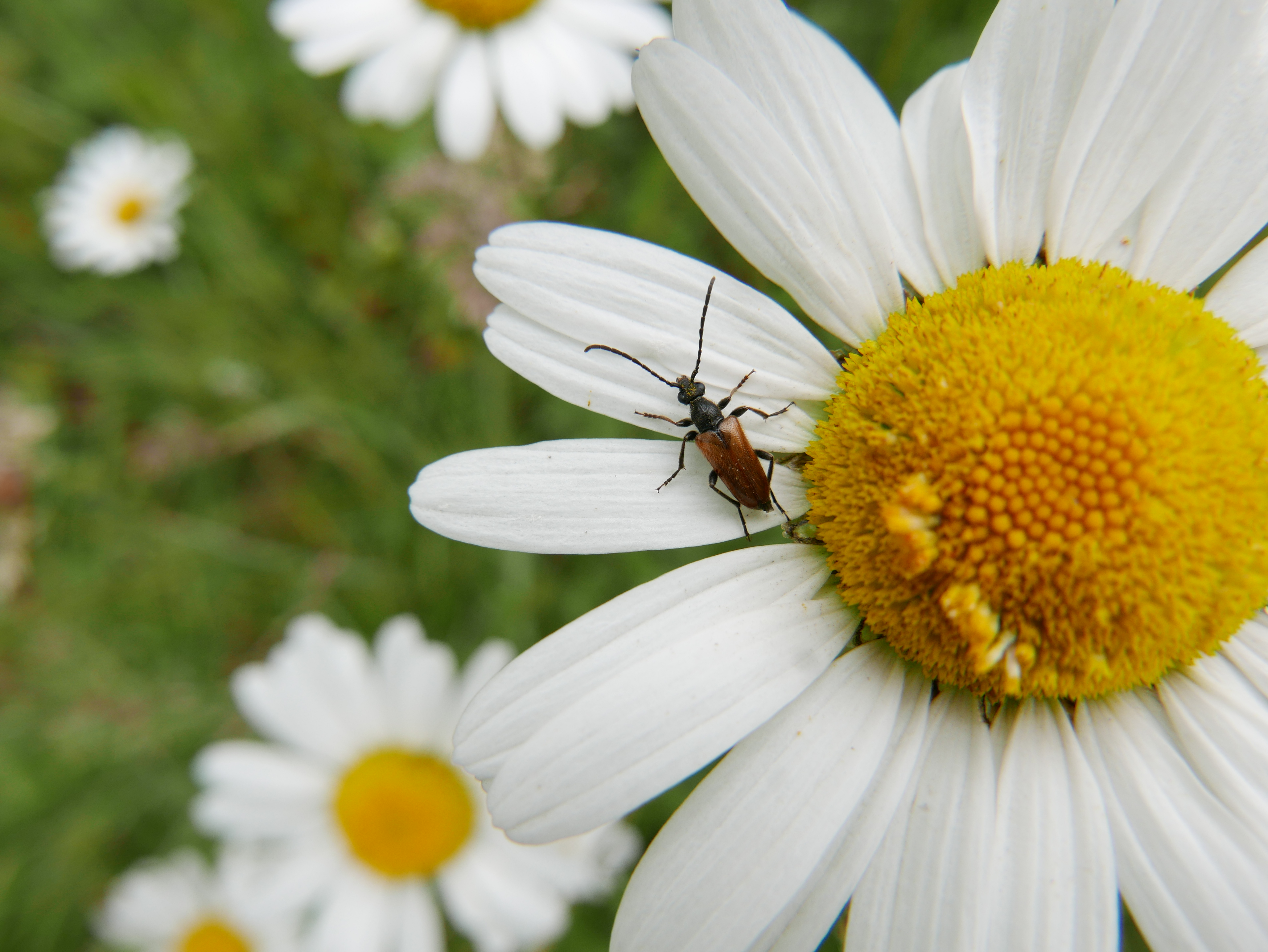
Daisies are part of the Asteraceae family of plants (which includes sunflowers) and although it can sometimes be hard to tell them apart there are actually an incredible 20,000+ species of daisy in the world. The name daisy comes from an Old English phrase “Daes eage” which translates as “Days eyes”. This is because daisies have the ability to open their flower petals in the day to soak up sunlight and attract pollinators and also to close their petals at night to protect them from nocturnal insects and help them retain moisture.

Daisies are incredibly adaptable and grow in a variety of climates across the world, they can be found on every continent except for Antartica and thrive in both dry, wet, sunny and shady areas. Did you know daisy species make up an incredible 10% of all types of flowering plants on Earth?

You might also be surprised to find that common lawn daisies are edible for humans, you can eat the young leaves, buds, flowers, and roots of these daisies. The young leaves in particular are a rich source of vitamins C and can be added fresh to salads, sandwiches, pasta, soups and stir-fries. Throughout history daises have been used for food and medicinal purposes. Ancient Egyptians grew them in their gardens, Roman armies used them to treat wounds and Henry VII ate them as a ‘cure’ for his stomach ulcers.
*Safety note: Please don’t ever eat plants that may have had pesticides or chemicals used on them.

Daisies have composite flowers, as you can clearly see on the the outside of the flower there are what looks like typical petals (sterile ray florets), but surprisingly the centre of the daisy (which is called the floral disc or flower head) is actually formed by hundreds of tiny flowers called disk florets. If you look closely at the photo below you can clearly see each individual floret.

It’s a shame that these incredibly adaptable and essential wildflowers have now become unwanted “weeds” that are often pulled up or killed off by chemicals. Wouldn’t it be wonderful if we all let these amazing wildflowers grow wild in our garden’s once again. Not only would you be helping wildlife, you would also be able to enjoy many of the fun daisy activities and recipe ideas below
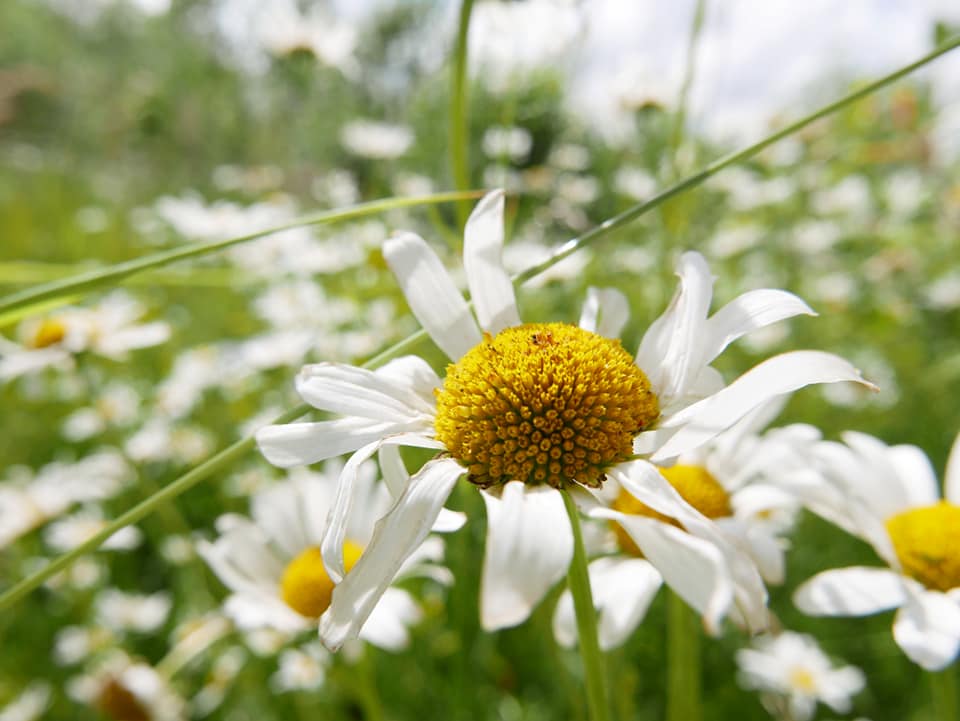
1. Go on a wildlife safari amongst the daisies
You will often find pollinating insects like bees, beetles, butterflies and moths on or around daisy flowers feeding on the nectar. You might even spot other species insects hiding under the petals, leaves or on the stems. The undersides of flowers and plants are often teeming with insects, eggs, caterpillars and larva that you would normally overlook. It’s the perfect place for them to shelter away from predators, wind and rain as well as often providing a source of food. You could take a notepad or camera with you to record your finds or even print out some nature bingo or scavenger hunt sheets. You could also help citizen science by recording any thing you find on either the iSpot or the iRecord databases.
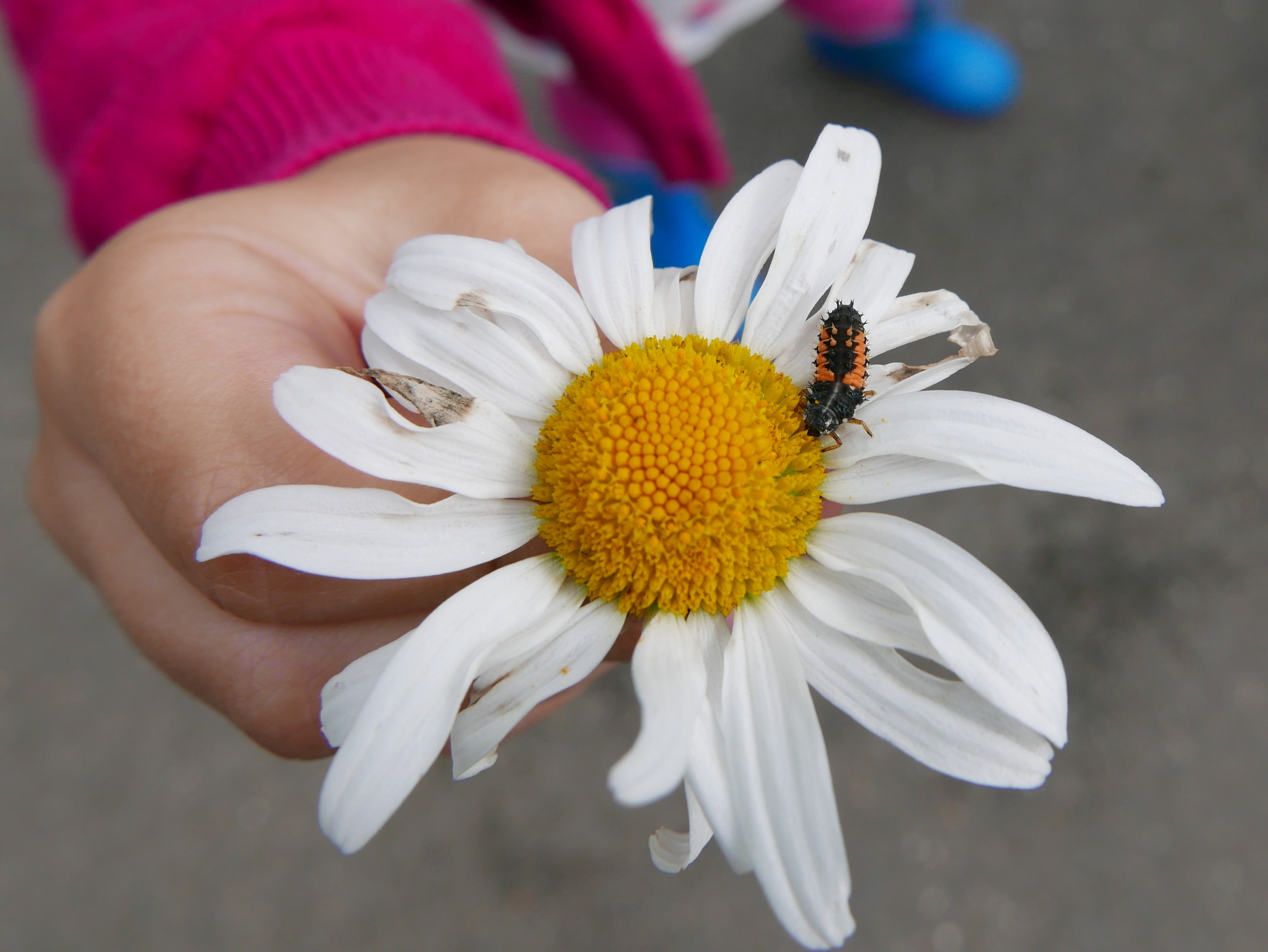
2. Play a pollination game
You can learn how insects pollinate daisies and other flowering plants by playing a simple pollination game. All you need for this is a large sheet of paper or cardboard, recycled milk bottle tops, a stick, string, glue and paint. First you need to paint daisy flowers across the surface of your picture. A few of them need to be big enough to place the milk bottle tops in the centre.

Paint the smaller flowers with yellow centres and then glue a few milk bottle tops onto the larger flowers. Next paint or draw a pollinating insect like a bee or butterfly onto a piece of card and cut it out. Then glue a small scrunched up piece of tissue onto the bottom of your flying insect so it can pick up the ‘pollen’ and transfer to the other flowers. Once the paint and glue has dried on the picture and insect you can then fill the milk bottles tops with yellow or orange paint to make your pollen.

Now you can have fun dipping the bottom of your insect into the ‘pollen’ paint and landing it on the other flowers to pollinate them. This is a great opportunity to talk to children about the important role pollinating insects play in the life cycle of plants and trees.
Did you know that a third of the food we eat comes from plants that rely on pollination? Even medicines and materials like morphine, aspirin and cotton are derived from pollinated plants? Yet pollinator species across the world are in drastic decline due to widespread pesticide use and the loss of habitats.

This is why its so important to help pollinators like bees, butterflies, moths, hover flies and beetles by providing food and egg laying spaces for them. You can easily do this by growing as many wildflowers and pollinator friendly plants and flowers as you can, thereby provide a source of food for all year round as well as giving them the plants they need to lay their eggs on.
3. Daisy chains
Making daisy chains is a simple childhood activity that is perfect for developing fine motor skills and hand and eye co-ordination. All you need to do is use a finger nail to make a small cut/hole through the base of a daisy stem, you then thread the stem of another daisy through this hole and then insert a cut into the stem of that daisy and so and so forth until you have formed a chain of daisies. You can then have fun turning your daisy chains into bracelets, necklaces, headbands or decorations.

4. Daisy nature art
Nature art (also sometimes called land art) is a wonderful nature activity that encourages creativity and fine motor skills in children of all ages and abilities. All you need is some imagination and natural materials to make a picture. If you grow daisies in your garden you can use them to make some bright and beautiful nature art pictures and patterns.

On windy days it’s hard to make a pictures and shapes with petals and lighter objects without them blowing away. So you could always bring your nature art materials indoors to play with. You could then glue your finished pieces to paper or cardboard so you can keep and enjoy them for longer. Or you could take photos of your artwork so you can then print them out or even turn them into cards to give to friends and family.

5. Nature painting
Nature painting is a simple activity for children of all ages, Just dip daisy flowers and leaves into paint and use them as natural paintbrushes or paint, print and mark make with. How about experimenting with other different natural materials to see what variety of marks you can make by using different shapes and textures.

You could also paint directly onto the leaves or flowers to decorate them. Or lay the leaves onto paper or cardboard and then paint over them to capture the interesting outlines of the leaves. Recycled cardboard is a great environmentally material to use instead of paper. Simply cut out panels from old cardboard boxes and packaging.
6. Sensory water play
Water play is a great sensory activity for children of all ages. Daisy flowers and leaves scattered in the water help to add extra scent, colour and texture for the children to enjoy and explore. Lavender and mint are also wonderfully calming herbs to use, but you could also use uplifting fresh citrus fruit slices as well.
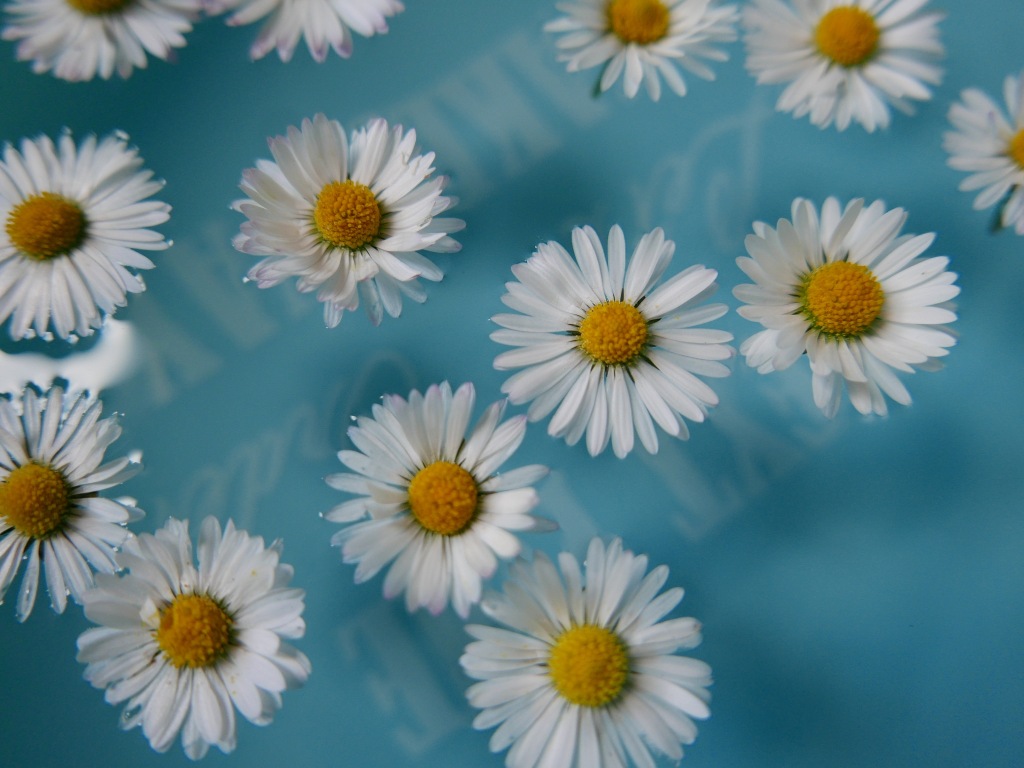
7. Sensory ice play
After you finish you can recycle the water and materials by pouring them into different shaped containers to freeze and replay with as ice blocks another day. It’s fascinating to see the objects trapped in the ice. You can hold the ice up to the light or experiment melting or breaking the ice in different ways using salt and warm water. Or the children can have fun stacking and playing with the ice to make towers.

8. Nature threading and weaving
A piece of recycled cardboard makes a great base for a threading and weaving nature hunt board. All you need to do is ask the children to draw, paint or cut simple pictures, shapes or faces onto some cardboard. (Or you could do it for them if they are too little). Then carefully poke a pencil through the cardboard at different points to make holes for the children to poke, thread and weave found natural materials through like daisies. You could use leaves, long grass, plant stems, bark, fallen fruit, nuts, seeds and flowers*. *Pretty please don’t please don’t pick wildflowers unless you have grown them yourself or you can use any fallen ones you find on the floor.

9. Daisy finger print flowers
Finger printing and painting is a simple activity for children of all ages. All you need is some paint and a surface to print onto. You could easily print the petals of your daisies using white paint and then pop a little yellow or orange finger print in the middle to from the flowers centre.

10. Tataki zome
Tataki zome is the Japanese art of transferring botanical dyes from flowers and leaves onto fabric by simply hammering them onto the surface. It’s also know as flower pounding, leaf bashing and sometimes refereed to as Hapa Zome. (Funnily enough Hapa Zome came from an artist getting the name wrong, now its more widely used than Tataki zome which is the correct name for it.)

For this activity you will need scraps of cotton or linen fabric or some old clothing. something to hammer with like a rounded stone, hammer or rolling pin, a safe surface to hammer on and finally natural botanical materials like flowers, leaves and grass. *Pretty please however don’t pick any wild flowers, only collect flowers you have grown yourself, fallen ones you find on the floor or flowers from shop bought bouquets.

Lay the fabric or clothing flat onto a hammer safe surface and arrange your flowers and leaves on top. Then cover everything with a piece of paper or another piece of fabric. Carefully but firmly (supervision required at all times for this) hammer across the fabric with a stone or hammer. You should be able to see the dye seeping through the fabric so make sure you have hammered evenly across. Peel back the paper to see the images you have made.
11. Daisy lip balm
It is surprisingly simple and easy to make your own natural daisy lip balm using just 3 ingredients. First you need a handful of daisies*, Bees wax or the vegan alternative of candelilla wax and a carrier oil like olive oil, sunflower oil, coconut oil sweet almond oil or castor oil.
*Safety note: Please don’t ever eat plants that may have had pesticides or chemicals used on them.

First place the daisies in a jam jar and cover them with your choice of carrier oil. Then place the jar on a window sill or warm place to infuse for 2 weeks. Make sure you stir the oil every few days and make sure the daises are completely covered with oil. After 2 weeks strain the oil through a muslin a cup or jug and measure the weight. If you are using bees wax you will need 1 part beeswax to 3 parts oil (For example 300g of oil only needs 100g of beeswax), If you are using candellia oil you want to use 1 part to 4 parts oil (for example 200g of oil needs 50g of beeswax).

Pour the oil into an old saucepan and gently heat, add in the bees wax of candillia wax and stir until its fully melted and mixed together. Pour it into a sterilised container* or pot like an old mini jam jar and leave to cool and set. If your lip balm turns out too soft or hard you can always re-melt it and add in more oil or wax.
*You can sterilize old jam jars by rinsing them out well with soapy water then filling them with boiling water for 5 minutes or by placing them in a warm oven for a few minutes (caution this will make the glass really hot, so handle with care and oven gloves.)
12. Painted daisy pebbles
We love finding painted pebbles when we are out and about, it’s wonderful to see the creativity and love that people put into them. You can easily find pebbles to decorate yourself by looking in your garden, on a nature walk or along the shore. All you need then is some paint or permanent markers to paint or draw daisy designs onto the pebbles. *Safety note please be aware of the choking hazard of pebbles with smaller children.

Once you have finished painting your pebbles you could use them in pretend play, as games counters or hide them in your garden and have a treasure hunt. You could even join a local rock finding group where you show pictures of the rocks you have made and invite people to find them in a local park or a safe, easy to access place. Who knows how far your rocks may travel.
*For day 2 of 30 days wild 2022 we learnt about daisies, made daisy nature art and paintings, tried daisy leaves and made daisy lip balm. We also rescued a stag beetle, climbed trees and followed a dinosaur trail at a plant nursery that supports mental health through gardening.
If you like this you might like to try:
14 dandelion activities and recipes + facts

12 Nasturtium recipes and activity ideas

12 Nettle activities and recipes
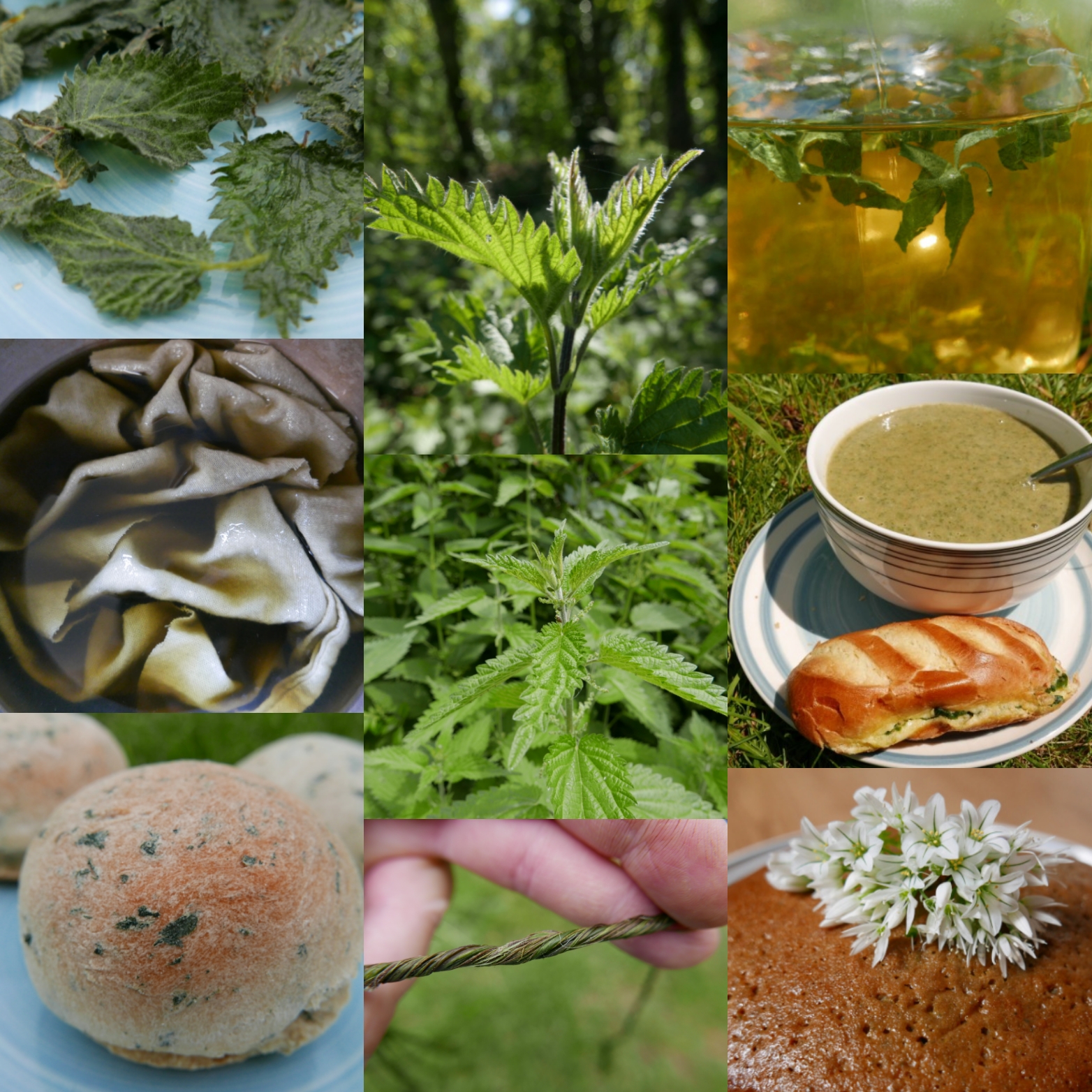
14 Lavender recipes and activity ideas


6 thoughts on “12 Daisy activity ideas and recipes + fun facts”